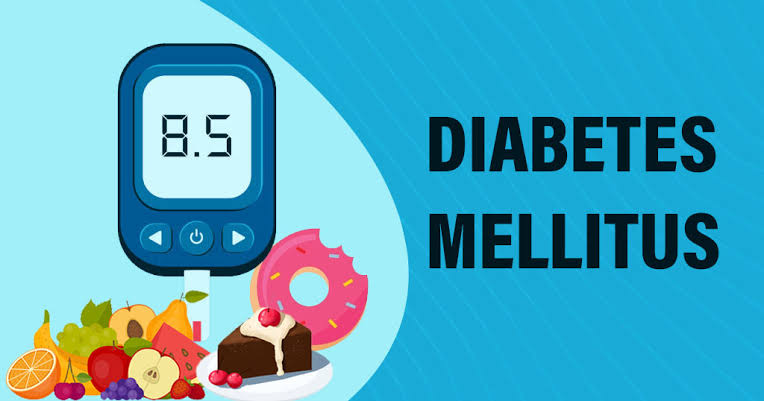In the heart of the Glucose Gladiators Garrison, a legendary warrior named Hope arose, her sword shining with a light that pierced the darkness of Diabetes Mellitus. With each battle, she struck down the enemy’s strongholds, her armor emblazoned with the emblem of balance and control. As she fought, a whisper spread among the ranks: “Hope is our champion, our beacon in the night.”
With every victory, the Garrison’s morale soared, their determination kindled by Hope’s unwavering spirit. Together, they charged into the fray, their weapons and armor gleaming with a newfound sense of purpose. The enemy trembled before them, its defenses crumbling beneath the onslaught of the Glucose Gladiators. And in the heat of battle, a tantalizing promise beckoned: the sweet taste of triumph, the tides of blood sugar finally brought under control.
The war raged on, each skirmish a testament to the Garrison’s unyielding resolve. Hope led the charge, her sword slicing through the shadows, illuminating the path to victory. And as the Glucose Gladiators fought on, their hearts burned with an unquenchable fire, their cry echoing across the land: “We shall prevail! Balance shall be ours!” The outcome hung in the balance, the fate of the realm of blood sugar suspended like a ripe fruit, ready to be plucked by the brave and the bold.
What is Diabetes Mellitus?

Diabetes Mellitus: A group of metabolic disorders characterized by high blood sugar levels, inadequate insulin production, and/or insulin resistance, leading to a range of complications if left unmanaged.
Types
1. Type 1 Diabetes (T1D): Autoimmune, insulin-dependent, typically develops in youth.
2. Type 2 Diabetes (T2D): Metabolic, insulin-resistant, most common form.
3. Gestational Diabetes (GDM): Develops during pregnancy.
4. LADA (Latent Autoimmune Diabetes in Adults): Autoimmune, shares features of T1D and T2D.
5. MODY (Maturity-Onset Diabetes of the Young): Genetic, rare, typically develops in youth.
6. Secondary Diabetes: Caused by another medical condition or treatment.
7. Monogenic Diabetes: Rare, caused by a single genetic mutation.
8. Double Diabetes: Coexistence of T1D and T2D.
9. Pre-diabetes: Blood sugar levels higher than normal, but not high enough for a diabetes diagnosis.
Causes
1. Genetics: Family history and genetic predisposition
2. Autoimmune response: Immune system attacks insulin-producing beta cells (Type 1)
3. Insulin resistance: Body’s cells become less responsive to insulin (Type 2)
4. Pancreatic damage: Injury or surgery affecting insulin production
5. Hormonal changes: Pregnancy, puberty, or other hormonal fluctuations
6. Obesity: Excess body fat, particularly around the abdominal area
7. Physical inactivity: Sedentary lifestyle
8. Age: Risk increases after 45 years old
9. Ethnicity: Certain ethnic groups have a higher risk
10. Other medical conditions: Certain diseases, such as Cushing’s syndrome or polycystic ovary syndrome (PCOS)
11. Medications: Certain drugs, like steroids or antipsychotics
12. Diet: High-calorie, high-fat, or high-sugar intake
Note: The specific causes and risk factors vary depending on the type of diabetes.
Symptoms
1. Increased thirst and hunger
2. Frequent urination
3. Fatigue
4. Blurred vision
5. Slow healing of cuts and wounds
6. Tingling or numbness in hands and feet
7. Recurring skin, gum, or bladder infections
8. Fluctuations in blood pressure and cholesterol levels
9. Dark, velvety skin patches (acanthosis nigricans)
10. Erectile dysfunction
11. Dry, itchy skin
12. Yeast infections
13. Unexplained weight loss or gain
14. Headaches
15. Difficulty concentrating
16. Frequent nose, gum, or bladder infections
17. Cuts or bruises that are slow to heal
18. Tingling or numbness in the mouth or tongue
19. Unusual odor or flavor in the mouth
20. Vision problems, such as double vision or vision loss
It’s important to note that not everyone with diabetes will experience symptoms, and some people may have different or subtle symptoms. If you’re concerned about your health or have risk factors for diabetes, consult a healthcare professional for a proper evaluation and guidance.
Complications
1. Cardiovascular disease: Heart disease, stroke, and peripheral artery disease
2. Kidney disease: Nephropathy, kidney failure, and end-stage renal disease
3. Neuropathy: Nerve damage, numbness, tingling, and pain
4. Retinopathy: Vision loss, blindness, and diabetic retinopathy
5. Foot damage: Ulcers, infections, and amputations
6. Cognitive impairment: Memory loss, dementia, and Alzheimer’s disease
7. Hypoglycemia: Low blood sugar, coma, and death
8. Hyperglycemic hyperosmolar nonketotic syndrome (HHNS): Severe dehydration and coma
9. Infections: Pneumonia, urinary tract infections, and sepsis
10. Cancer: Increased risk of certain cancers, such as pancreatic, liver, and breast cancer
11. Gastroparesis: Delayed stomach emptying and digestive problems
12. Sexual dysfunction: Erectile dysfunction and decreased libido
13. Osteoporosis: Weakened bones and increased risk of fractures
14. Mental health: Depression, anxiety, and eating disorders
15. Pregnancy complications: Gestational diabetes, preeclampsia, and preterm labor
It’s important to note that proper management and control of diabetes can significantly reduce the risk of developing these complications. Regular health check-ups and screenings are essential for early detection and treatment.
Prevention
1. Maintain a healthy weight: BMI between 18.5 and 24.9
2. Exercise regularly: At least 150 minutes of moderate-intensity aerobic exercise, or 75 minutes of vigorous-intensity aerobic exercise, or a combination of both, per week
3. Eat a balanced diet: Focus on whole, unprocessed foods, fruits, vegetables, whole grains, lean proteins, and healthy fats
4. Choose whole grains: Whole grains, such as brown rice, quinoa, whole wheat bread, and whole grain pasta
5. Limit added sugars: Less than 10% of daily calorie intake
6. Stay hydrated: Drink plenty of water and limit sugary drinks
7. Manage stress: Engage in stress-reducing activities, such as yoga, meditation, or deep breathing exercises
8. Get enough sleep: 7-8 hours of sleep per night
9. Monitor blood pressure and cholesterol levels: Regular health check-ups
10. Quit smoking: Nicotine cessation programs and support
11. Limit alcohol intake: Up to one drink per day for women and up to two drinks per day for men
12. Get regular physical activity: Aim for at least 30 minutes of moderate-intensity physical activity per day
13. Get screened for diabetes: If you’re 45 or older, or if you’re at risk
14. Breastfeed: Breastfeeding has been shown to lower the risk of developing type 2 diabetes
15. Get enough vitamin D: Through sun exposure, supplements, or fortified foods
Remember, it’s essential to consult with a healthcare professional before making significant changes to your lifestyle or habits. They can help you determine the best ways to reduce your risk of developing diabetes based on your individual health needs and circumstances.
Treatment
Lifestyle Modifications:
1. Diet: A healthy, balanced diet that is low in sugar, salt, and saturated fats.
2. Exercise: Regular physical activity, such as walking, swimming, or cycling, for at least 150 minutes per week.
3. Weight management: Maintaining a healthy weight through a combination of diet and exercise.
4. Stress management: Engaging in stress-reducing activities, such as yoga or meditation.
Medical Interventions:
1. Medications:
– Metformin (biguanides)
– Sulfonylureas
– Thiazolidinediones (TZDs)
– DPP-4 inhibitors
– SGLT-2 inhibitors
– Insulin therapy (for type 1 diabetes and some cases of type 2 diabetes)
2. Insulin therapy:
– Basal insulin (long-acting)
– Prandial insulin (short-acting)
– Premixed insulin
3. Blood glucose monitoring: Regularly checking blood sugar levels to adjust diet, exercise, and medication as needed.
4. Continuous glucose monitoring (CGM): Wearable devices that track blood sugar levels continuously.
5. Bariatric surgery: Surgical interventions for weight loss in obese individuals with type 2 diabetes.
6. Pancreatic islet cell transplantation: Transplanting healthy islet cells from a donor pancreas to replace damaged cells.
7. Artificial pancreas: A device that combines a CGM with an insulin pump to automatically manage blood sugar levels.

